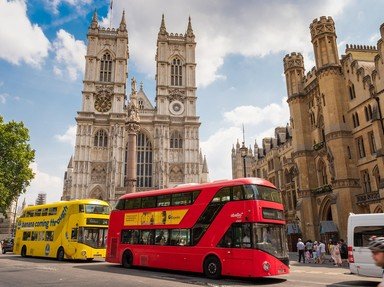Quiz Answer Key and Fun Facts
1. London Bridge, which connects the north and south banks of the Thames, was one of the engineering marvels of the capital. As well as a roadway what else did the bridge house?
2. One of the most beautiful buildings in the city was Bishop of London's church. It was the predecessor of the one that Christopher Wren designed. What was its name?
3. William the Conqueror built the first structure, the White Tower, in this famous edifice that still attracts hundreds of thousands of visitors. It has housed many important prisoners, but in the 14th century was a royal residence in London. What was it known as?
4. In the 14th century London was a walled city. Who built the original walls in about the 2nd century?
5. Just outside the city walls, but still considered part of the city, was the area of Smithfield. What knightly contests might a 14th century visitor have seen there?
6. In the 14th century this palace, on the north bank of the Thames, contained the main chambers of government: the Painted Chamber, the White Chamber and the Marcolf Chamber, which were the rooms where Parliament met. What was it called?
7. What well known London church is the place where virtually all English monarchs have been crowned from the time of the William the Conqueror, the Norman conquest?
8. Most cities and towns in medieval times executed their criminals outside the gates, but in London executions took place at the junction of two major roads. What was this site called?
9. Along the Strand, the thoroughfare which then had a panoramic view of the river, were the most beautiful and prestigious houses in the city. Which son of Edward III, who ruled for Richard II when he was young, lived in the mansion called the Savoy?
10. The Southwark Stews were a tourist attraction of a different kind. There was little or no stigma attached to the men who frequented this area. What activity took place there?
Source: Author
Calpurnia09
This quiz was reviewed by FunTrivia editor
bloomsby before going online.
Any errors found in FunTrivia content are routinely corrected through our feedback system.

